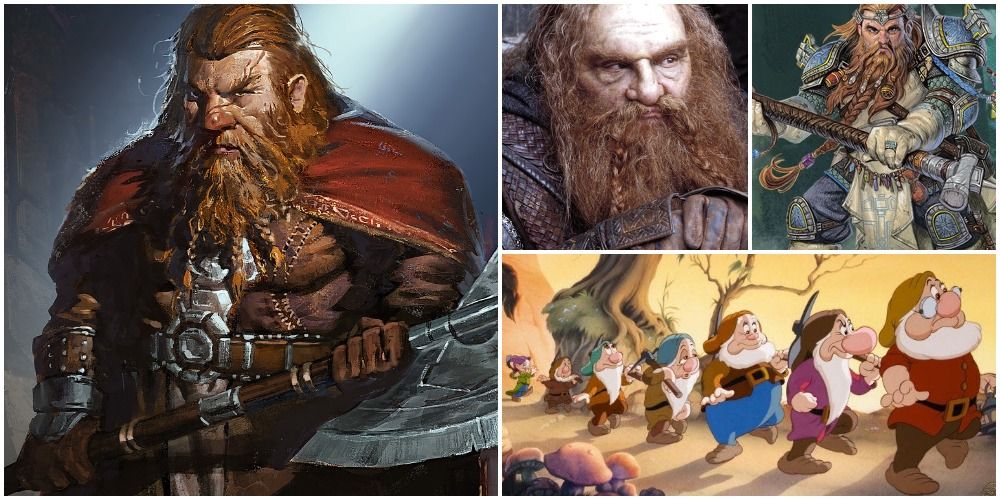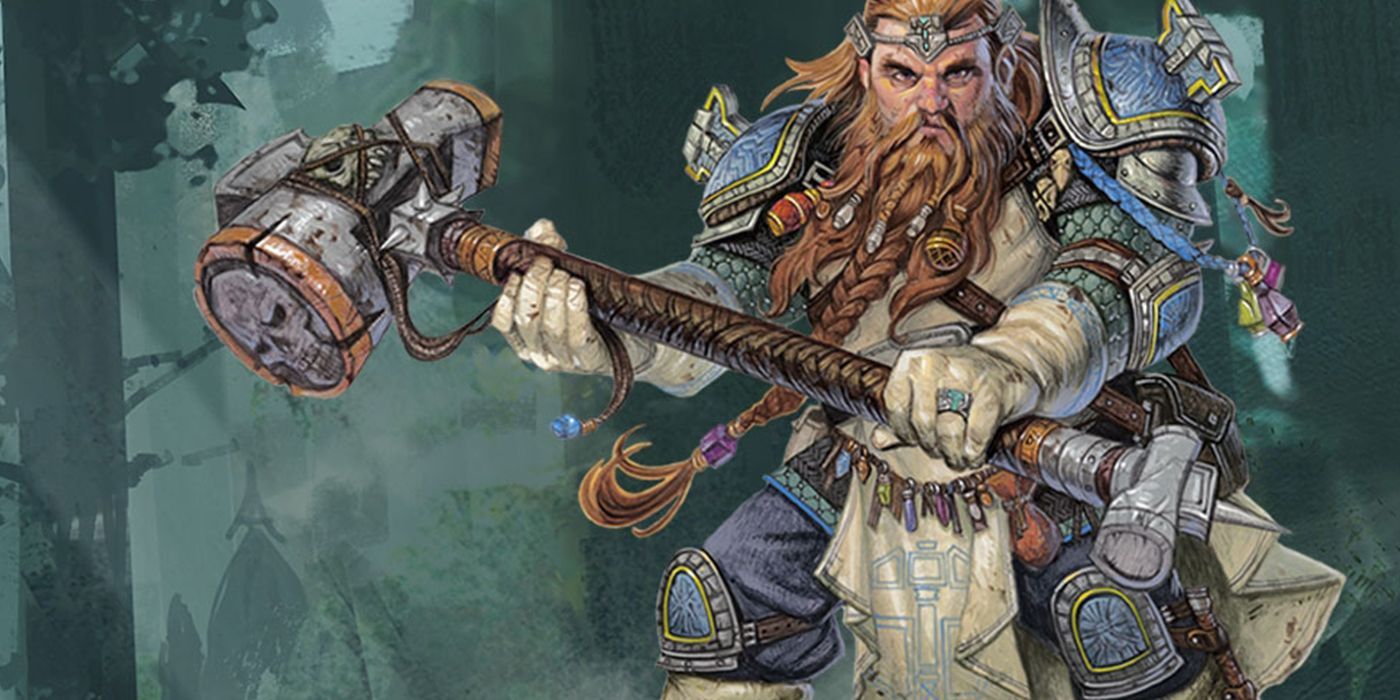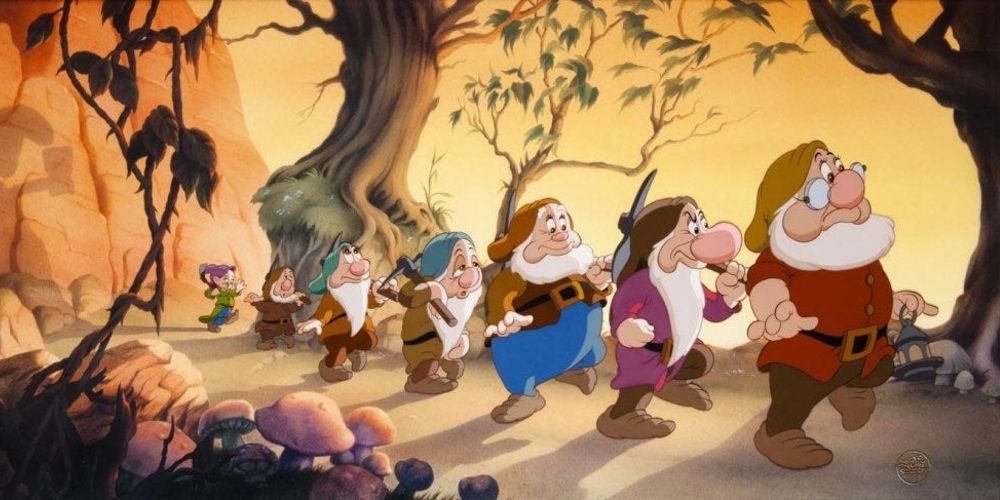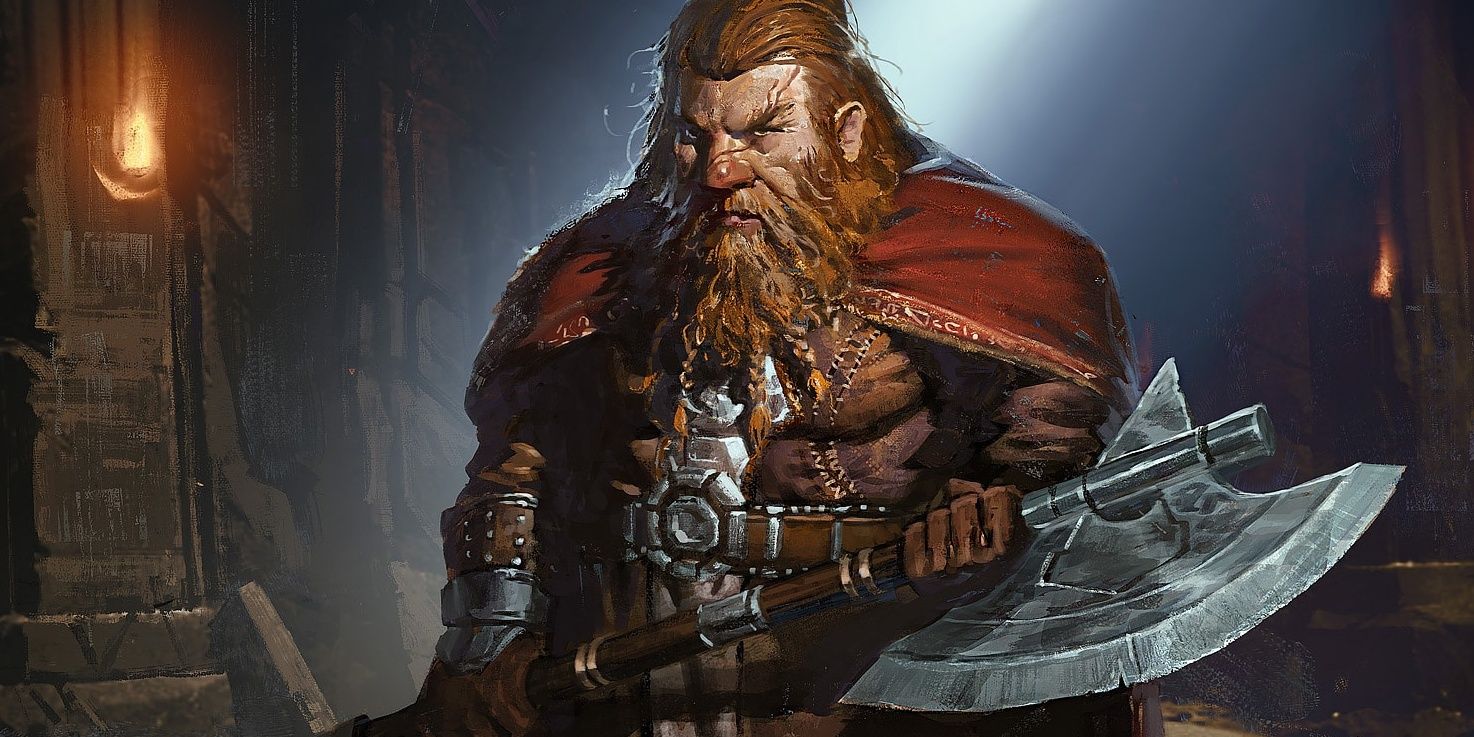
Dwarves have been a staple of fantasy worlds for a long time. Details can vary between different media, but certain aspects remain consistent. Usually, they are about half the size of a human, often sporting very long and thick beards. Many stories show them living in a culture of industry or craftsmanship, working as miners or blacksmiths. When fighting, they are often associated with heavy weapons like battleaxes and hammers.
RELATED: Dungeons and Dragons: Easiest Classes For New Players
One of the biggest appeals of Dungeons & Dragons is the ability to customize a character to explore a fictional world. Players can select from a variety of classes, and can also choose from several different races, including dwarves. Whether a player their character to resemble the Dwarves of Norse Mythology, the Dwarves who helped Snow White, or the Dwarves of Middle Earth, these small but mighty characters can be excellent additions to any party.

Dwarves are well-suited to combat. Even at first level, a dwarf automatically receives two extra constitution points and gets proficiency in heavy weapons like battleaxes and warhammers. This makes them a very good fit for the barbarian and fighter classes, as it allows them to take damage while also inflicting it on their enemies.
A dwarf also has access to proficiencies in smith tools, mason's tools, or brewer's tools, due to their culture of craftsmanship. A dwarf can be an excellent blacksmith or stonecutter if the need arises, or they can use brewer's tools to make drinks for the party to enjoy in their downtime.
The main disadvantage with dwarves is, while they are sturdy and great at fighting, they are slower than other races. This can affect their ability to engage with enemies. They lack the agility of elves, and this slowness can be restrictive during combat.
RELATED: The Best Ways To Play Dungeons & Dragons Online
- Darkvision: Dwarves are able to see up to 60ft ahead while in dark places. Although this ability is not unique to dwarves, it can be extremely useful when moving through dungeons or caves where light does not easily penetrate.
- Stonecunning: Because of a background working with rocks, dwarves are very good at examining any kind of stonework. Any history check related to stonemasonry has double the chance of succeeding.
- Dwarven Resilience: Dwarves have a natural resistance to poison, which can be extremely helpful during saving throws.

Mountain dwarves are typically portrayed as hardened survivors. They prefer to live in tight-knit but isolated communities in rough environments, where they are less likely to encounter other races. Barbarians and fighters are common roles for them, although they can fit into any class. Independence and self-reliance are core values of mountain dwarves, and they are reluctant to ask others for help.
Mountain dwarves get two extra points for strength, which is especially great for combat-oriented classes like fighter, barbarian, or paladin. They also get access to light and medium armor, plus an extra hit point.
The Dwarves of Middle Earth would be good examples of Mountain Dwarves, especially as depicted in The Hobbit. Aside from literally living in and under mountains, distrust of other races is common among them. Thorin Oakenshield was ready to go to war over being asked to share his treasure. In Fellowship Of The Ring, even Gimli had to warm up to the idea of fighting alongside an elf.

Hill dwarves are usually depicted as being a more sociable race. They are more inclined to interact with others and develop working relationships with neighboring communities, though their lifestyles are often otherwise very similar to mountain dwarves.
Like mountain dwarves, hill dwarves are proficient fighters who can take damage. They get the "dwarven toughness" feat which adds one extra hit point, and continues to add one each time the player levels up. This is great for combat, since the increased health makes them good for tank positions.
RELATED: Dungeons & Dragons: Basic Guide To Being A Bard
Hill dwarves are also more versatile than mountain dwarves. They get one extra point to wisdom, allowing for a more tactical approach. While a mountain dwarf focuses on physical strength, hill dwarves are more aware of their surroundings. Improved wisdom scores mean better chances of successful perception and survival rolls. The wisdom ability also lends itself to some spellcasting classes, particularly druids and clerics. This makes hill dwarves a good fit for players interested in subverting the depictions of barbarian and fighter dwarves.
The title characters in Snow White and the Seven Dwarves would be good examples of hill dwarves in popular culture. They are much more outgoing, and happy to help a human in need.

While there is no right or wrong way to build a dwarf, it is useful to consider their key advantages. Dwarves are naturally strong and sturdy, making them great for combat, but this is not necessarily a requirement. Dwarves do not have to be fighters or barbarians. Since Dungeons & Dragons is not exclusively combat, a non-fighter dwarf could use their strength in other ways. For instance, they may volunteer to carry a heavy load for the party, move heavy obstacles, or pull up a teammate who is hanging from a cliff.
Additionally, dwarves have other abilities besides strength. Some players may be more interested in working with stonecutting or poison resistance. The stonecutting ability could easily allow a dwarf to be a good archaeologist or geologist, being able to discern information about stone artifacts from their own experience working with rocks. Such a character would be a great fit for the Artificer class. Alternatively, a dwarf could try to win favor from a king by volunteering as a taster, using their poison resistance ability to identify the weapon of a potential assassin.
NEXT: Dungeons And Dragons: Subclasses To Try That Aren't Available In The Player's Handbook

